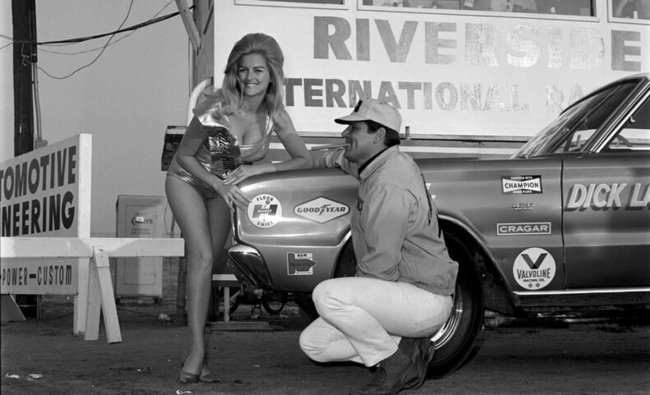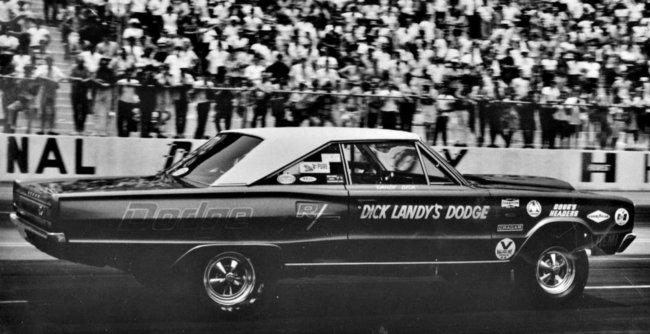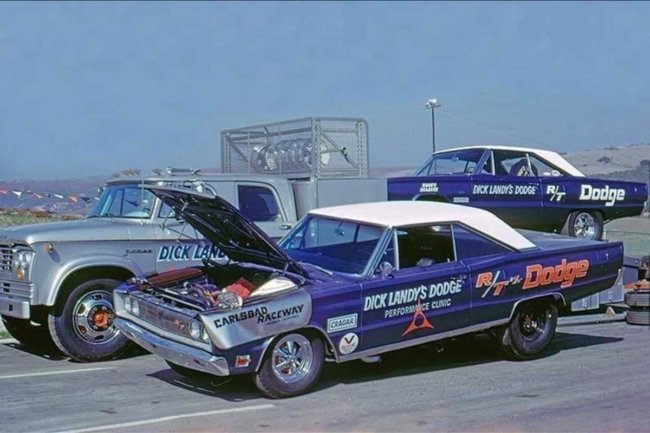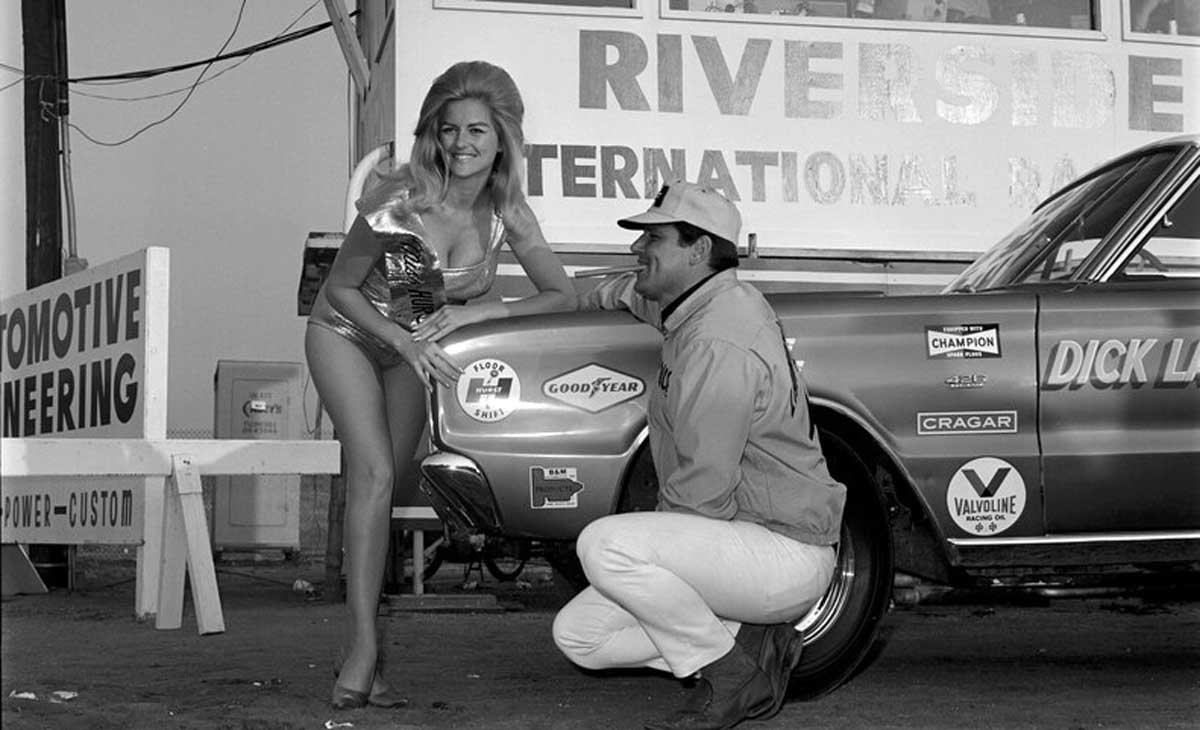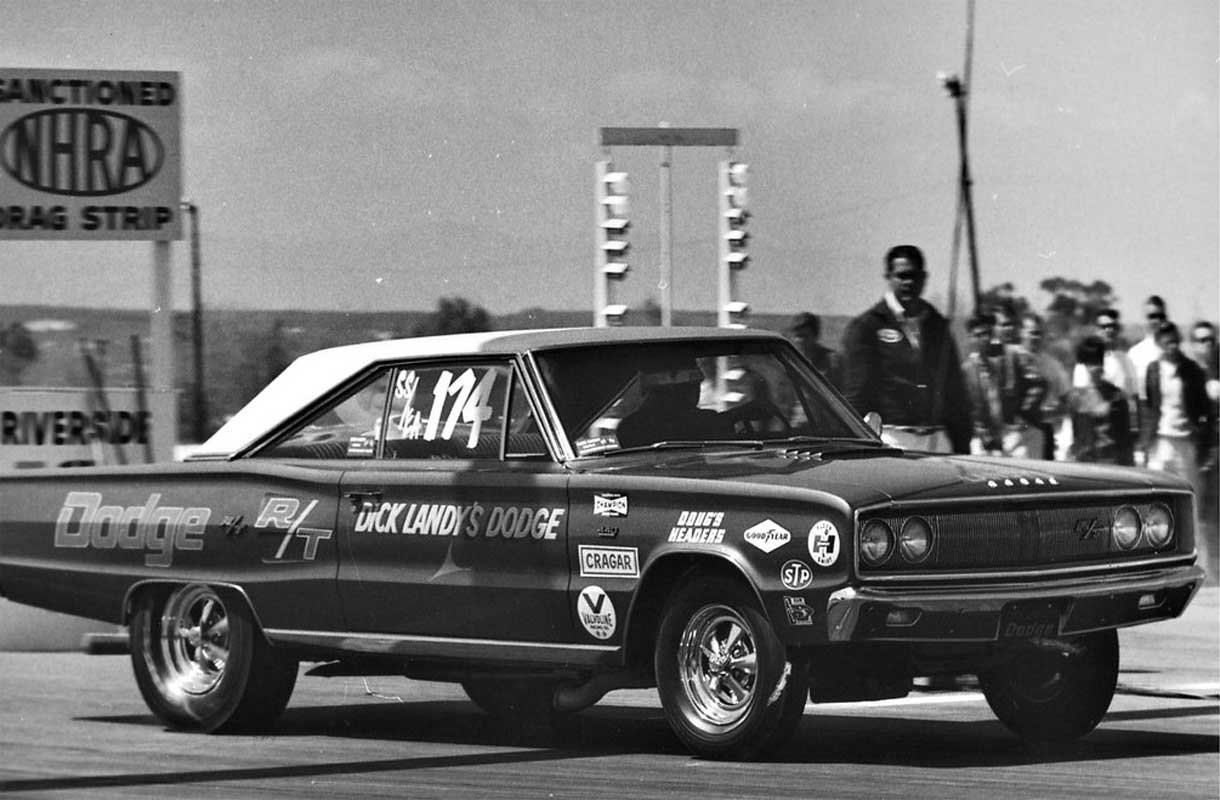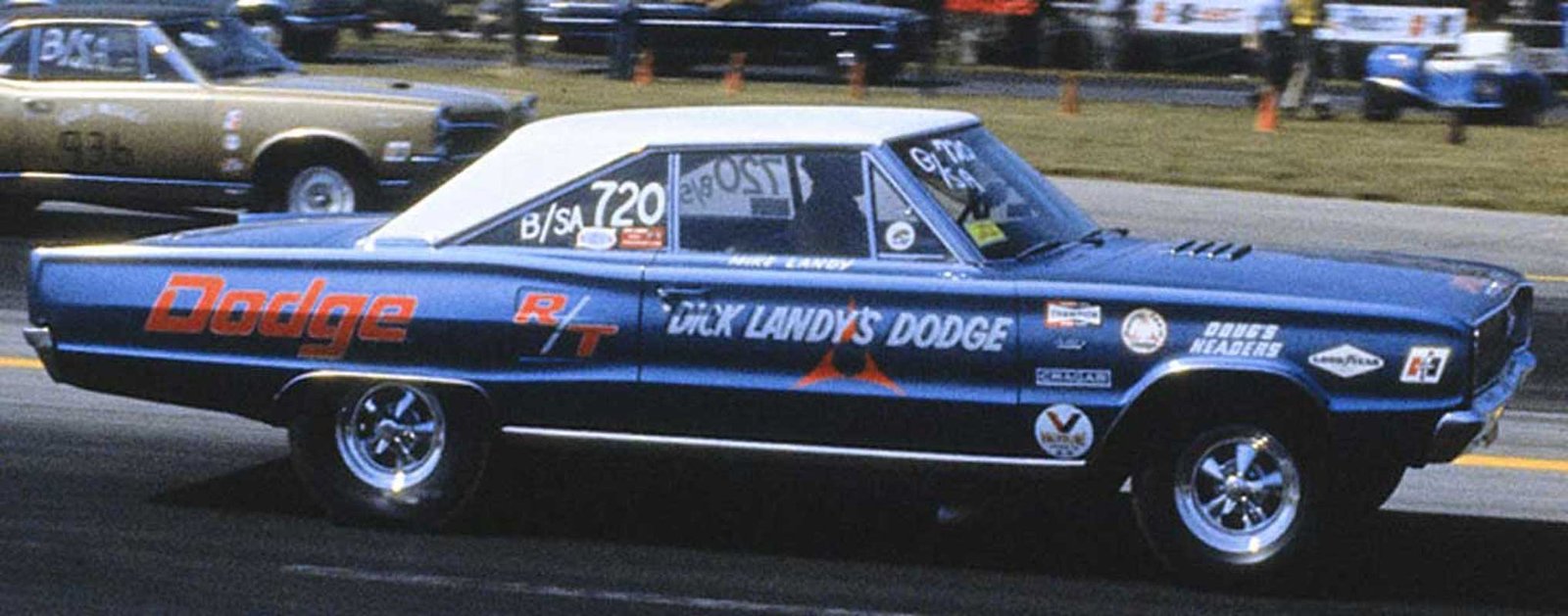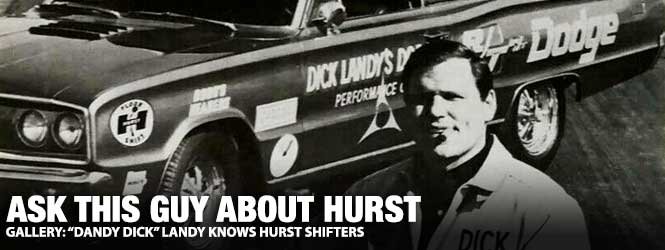
By 1966, the quarter-mile “stockers” had morphed into altered wheelbase extended nose beasts with nitro-burning Hemis stuffed between frame rails. The cars tended to be a little rough, and to many spectators, they looked funny. Thus, the track promoters hung the “funny car” moniker upon them. However, the Chrysler brass was not laughing.
The company was pumping in plenty of money into race cars that no longer resembled the vehicles for sale at the local Dodge or Plymouth/Chrysler dealerships. In 1966, Chrysler sold zero nitro-fed Darts or Barracudas, so for 1967, Chrysler plucked many drivers out of the fuel funny car rides and provided seats in Stock or Super Stock gas-burning door slammers. The drivers would handle the steering wheel, thrash the Hurst shifted 4-speed, and win in vehicles that looked like the latest Detroit offerings.
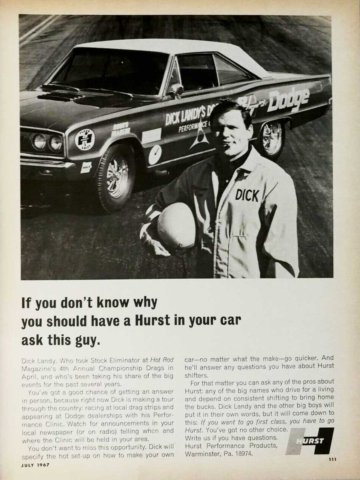
Dick Landy was one of the drivers that moved out of a funny car and back to the Stock and Super Stock ranks. During the 1967 season, Landy had as many as three SS/B (Super Stock/class B-stick shift) Coronets (one R/T and two model 440s – all Hemi cars), an SS/EA (class E-Automatic) Coronet with a 440, and a B/SA (class B/Stock Automatic) 440 Coronet.
As described in the July 1967 Hot Rod Magazine advertisement, Landy used Hurst shifters in all his Super Stockers because “if you want to go first class, you have to go with Hurst.” Depending upon the race, Landy would rely on team drivers to handle the driving chores of some of his beautiful blue and white Dodges.
The wins for Landy and the slew of Mopar drivers bombing the Stock and Super Stock classes started to add up immediately. Early in the season, Landy won the coveted Hot Rod Magazine’s 4th annual Championship Drags.
An additional benefit of Chrysler’s move was the most popular drivers would host Performance Clinics at local dealerships across the United States. Landy was the Dodge representative for the clinic program.
At the clinics, the attendees would listen to Landy’s latest advice, tips, and techniques to improve their vehicles’ performance. As stated in the ad, Landy would even answer questions about Hurst shifters during these clinics. The Performance Clinic Program was a resounding success. The clinics ran well into the 1970s before the performance sector faded away due to fuel economy standards and tightening emissions regulations.
Left: Landy poses with Linda Vaughn “Miss Hurst Golden Shifter” for a photo op. Vaughn was and has continued to be a notable envoy and advocate of American motor racing since the 1960s. Oh yeah, if you didn’t notice, the Coronet is a Hemi car. Center: The Chrysler brass were pleased with the move away from nitro-burning vehicles and back to the door slammers. The latter more clearly represented what the company sold, and the vehicles were easily recognizable by the public. Right: High-tech and modern transportation for 1967. A D500 ramp truck and a trailer. Landy had as many as five Coronets in ’67, so if all the cars were going to the track more transporters would be needed. The Coronet in the foreground was a wedge car, and the one in the background was a Hemi car. (Photographers unknown)
In the 1960s, Hurst earned a stellar reputation by developing the best competition shifter on the market. Whether NASCAR or drag racing, when an upshift was required, the Hurst products provided a sure and positive shift without any concern of binding or not thoroughly engaging the next gear. High-quality Hurst components became OEM factory-installed pieces that afforded the street enthusiasts the same benefits as the professionals.
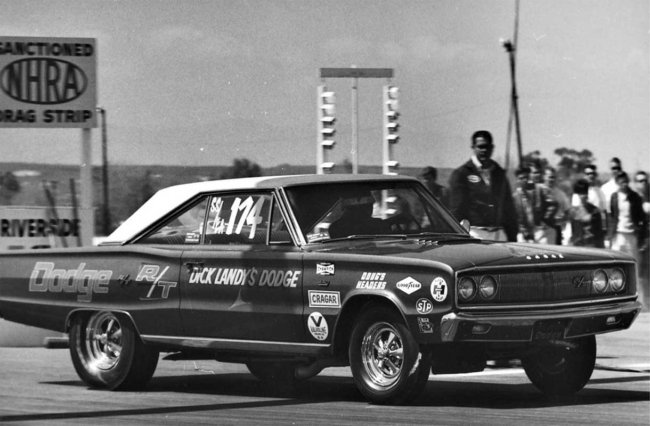
Above: Landy wheeling his SS/EA as it charges out of the hole. The wedge car had a Torqueflite that was stirred by a Hurst automatic floor shifter. A 440 engine propelled the Coronet down the track. (Photographer unknown)
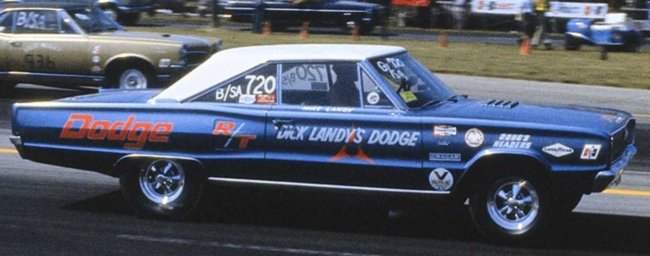
Above: Landy’s Dodges were always clean and meticulously prepared. His fleet of 1967 Coronets was no exception. Regardless of the year or the Mopar, a nice set of Cragar S/S wheels provides the final touch to any car. (Photographer unknown)
The same quality parts that built Hurst’s reputation in the ‘60s exist today. Hurst, now a Holley company, still produces its world-famous shifters, now for late-model muscle cars and the classic Mopars. However, Hurst has expanded into driveline conversion components, exhaust systems, suspension systems, coil springs, bump stops, wheels, roll/launch control, and floor mats. If you are looking for a class-leading shifter for your manual or automatic ride, look no further than Hurst.



